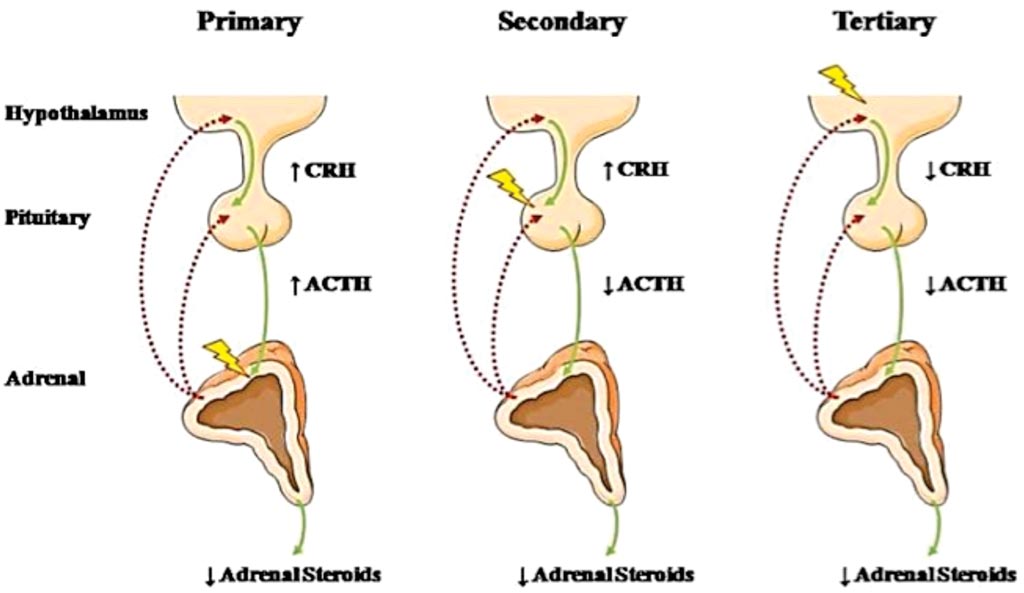ACTH Stimulation Test Results Reassessed
By LabMedica International staff writers
Posted on 13 May 2018
Cosyntropin (adrenocorticotropic hormone or ACTH) stimulation testing is considered the gold standard for investigating primary adrenal insufficiency (AI) and may be an effective alternative to insulin tolerance testing in the workup of secondary AI.Posted on 13 May 2018
The time of day that ACTH stimulation testing takes place does not affect the percentages of failed, borderline, or passed results in the evaluation of AI. However, testing sites also have different practices about the time of day (morning versus afternoon) that ACTH testing takes place.

Image: A diagram of types of adrenal insufficiency; CRH: corticotropin-releasing hormone, ACTH: adrenocorticotropic hormone (Photo courtesy of US National Institute of Health).
Scientists at Dalhousie University (Saint John, NB, Canada) conducted a retrospective study of all ACTH testing performed during a 10-year period to assess whether both 30- and 60-minute results are necessary and whether the timing of testing affects outcomes. In all, there were 431 ACTH stimulation tests; the team excluded 92 due to medications the patients were taking or because the patients had already been diagnosed with primary AI.
The cutoff for ACTH testing was 18 mcg/dL (500 nmol/L) with a test “fail” if both 30- and 60-minute results were below this level, a “borderline pass” if either a 30- or 60-minute value was below the cutoff, and a pass if results at both time frames were above the cutoff. The investigators considered the time of day in three blocks of time: early morning (between 08.00 and 10.00); late morning (between 10:01. and 12:00); and afternoon (after 12:00).
The scientists found that there were no differences at the different time intervals in mean cortisol levels at 30 (574.5, 559, 534 nmol/L, respectively) and 60 minutes (642, 623, 619 nmol/L, respectively) between groups. When comparing 30- versus. 60-min values using a cut-off of ≥500 nmol/L, 45 patients (13.4%) failed to reach the cut-off at 30 minutes, but met the cut-off at 60 minutes. Conversely, only two patients (0.6%) who met the cut-off at 30 minutes failed to reach it at 60 minutes.
The authors concluded that outcomes from ACTH testing are not affected by time of day. Furthermore, using a 30-minutes cortisol level in isolation results in more than one in seven patients having a false positive diagnosis of AI; a 60-minutes value of ≥500 nmol/L alone may be sufficient to diagnose AI in more than 99% of cases. The study was published in the April 2018 issue of the journal Clinical Biochemistry.
Related Links:
Dalhousie University














